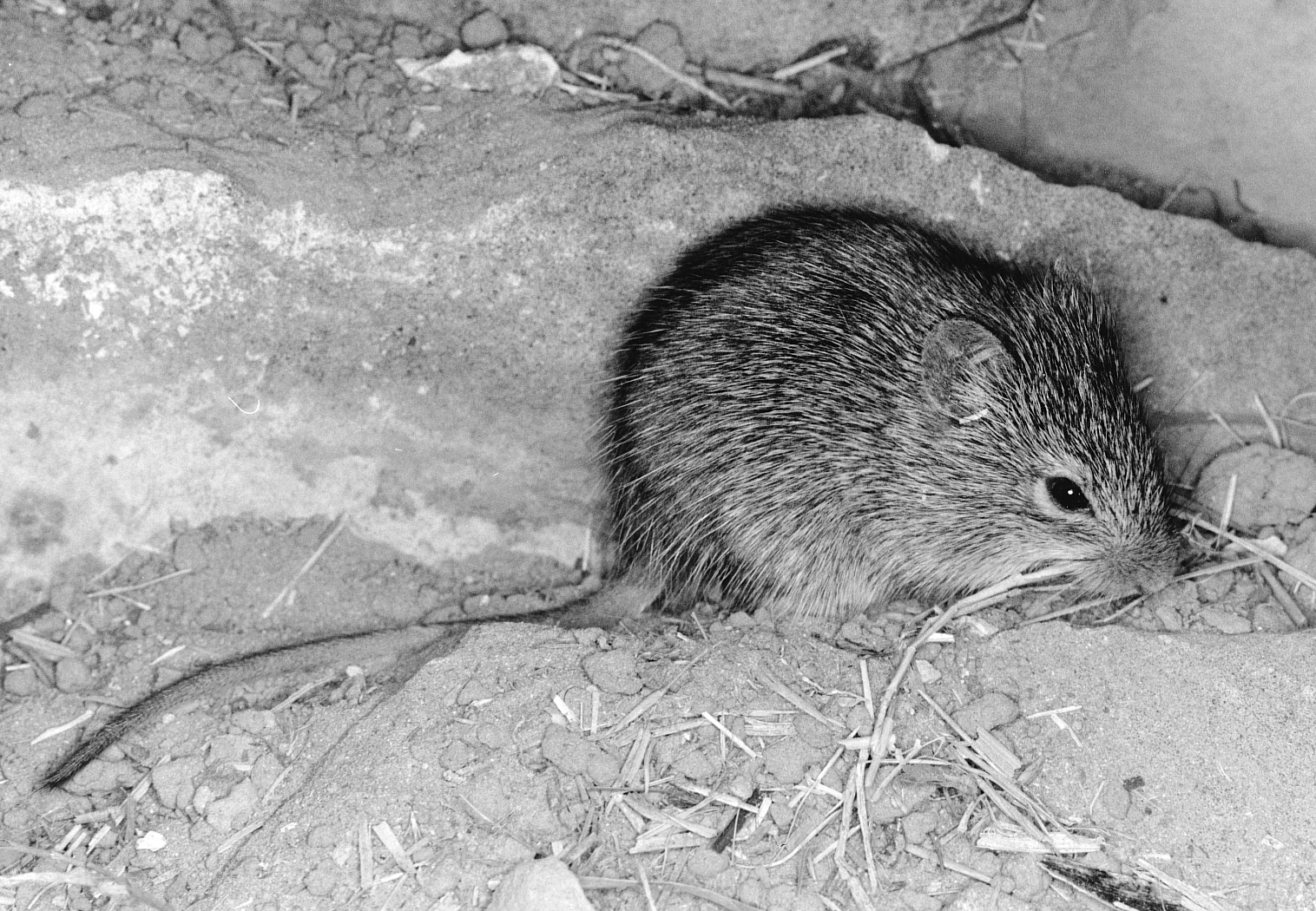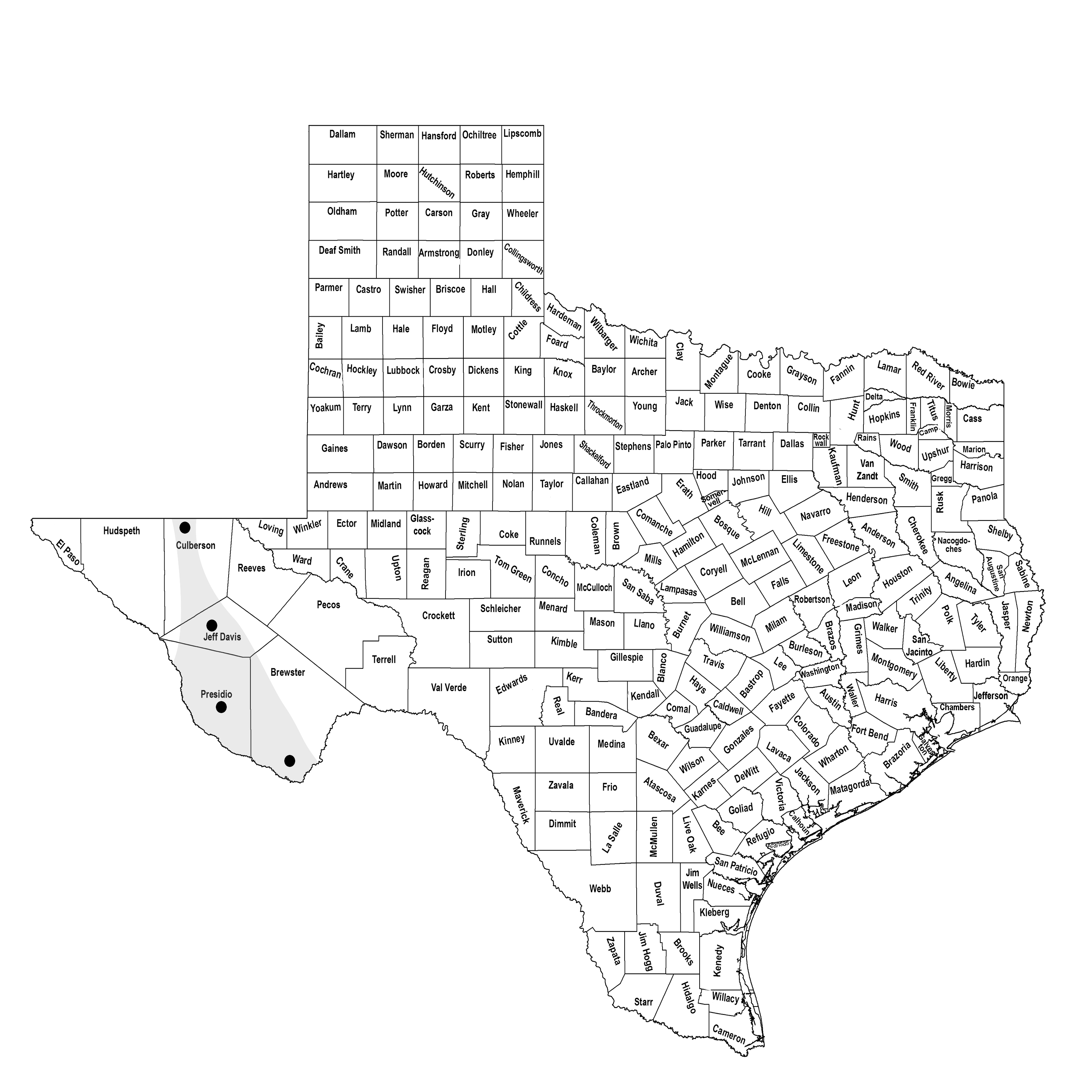YELLOW-NOSED COTTON RAT
Sigmodon ochrognathus Bailey 1902
Order Rodentia : Family Cricetidae
DESCRIPTION. Similar to S. hispidus but paler and with the snout distinctly orange or rusty; tail hairier and distinctly bicolor, nearly black above, grayish buff below; underparts grayish white. Dental formula: I 1/1, C 0/0, Pm 0/0, M 3/3 × 2 = 16. Averages for external measurements: total length, 259 mm; tail, 114 mm; hind foot, 28 mm. Weight, 50–80 g, occasionally as much as 112 g.

DISTRIBUTION. Generally isolated at higher elevations in the Chisos Mountains, Brewster County; Davis Mountains, Jeff Davis County; and the Sierra Vieja, Presidio County. Recently, this species has been reported from the low country of the Davis Mountains region (Limpia Canyon); Big Bend Ranch State Park, Presidio County; Elephant Mountain Wildlife Management area, Brewster County; and the Guadalupe Mountains, Culberson County (130 km [80 mi.] north of its previously known range).

SUBSPECIES. Monotypic species.
HABITS. Yellow-nosed cotton rats live primarily in high-elevation grasslands as well as rocky upland slopes with scattered bunches of grasses in montane riparian habitat. In the Chisos Mountains their runways have been located in lodged needlegrass in Laguna Meadow at the foot of Emory Peak. There, the rats occupied an area of about 40 ha (100 acres). Their runways radiated from underground dens, some of which were under clumps of agaves; others were among the roots of large junipers. A surface nest under a pile of dead blades of agaves was composed of dry grasses and long fibers from the agave plants. It was about 12 cm in outside diameter. Other nests have been found beneath the dead lower leaves of sotol. At Big Bend Ranch State Park, a single individual was obtained in a lowland seasonal streambed near a permanent spring surrounded by willow, false willow, and deergrass.
These rats can be active in the daytime or at night. They are reported to breed throughout the year. Females give birth to litters of three to five (average 3.6), possibly several times a year. The gestation period is approximately 35 days. At birth, young rats weigh 4.5–6.6 g and are haired. They gain about 2 g in weight each day and reach sexual maturity by 45 days. Captive females have produced offspring at 71 days of age.
POPULATION STATUS. Uncommon. Until recently this species was thought to be rare and restricted to montane habitat and possibly in need of listing and special protection. Recent trapping evidence, however, suggests it is becoming more abundant and widespread throughout its range in the Trans-Pecos. Recent collecting shows it to occupy a number of nonmontane habitats. This is another species that may be expanding in association with the increasing aridity in western Texas.
CONSERVATION STATUS. The IUCN lists the yellow-nosed cotton rat as a species of least concern, and it does not appear on the federal or state lists of concerned species. Given its restricted distribution, this is a species that warrants monitoring.
From The Mammals of Texas, Seventh Edition by David J. Schmidly and Robert D. Bradley, copyright © 1994, 2004, 2016. Courtesy of the University of Texas Press.
Natural Science Research Laboratory
-
Address
Museum of Texas Tech University, 3301 4th street, Lubbock, TX 79409 -
Phone
806.742.2486 -
Email
nsrl.museum@ttu.edu

